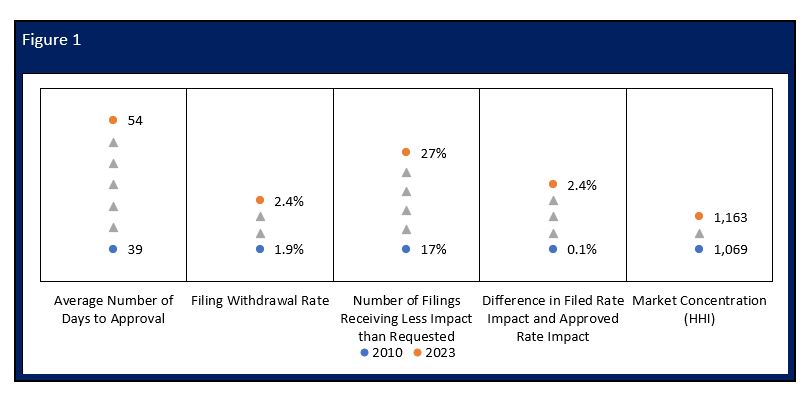
Safiya Reid took a professional journey that demonstrates career diversity. “In my first job out of college, I did market research.” Later, she worked on the Rickey Smiley Morning Show as a production intern and at a chain dine-in restaurant while saving up for graduate school. Eventually, after landing in insurance, “I kind of just never left,” she said.
Reid sat down with Triple-I to discuss how her Associate Vice President of Employee Engagement role at Pure insurance fits into the larger picture of Diversity, Equity, and Inclusion (DEI) and how this work can enable a more robust organization and industry.
When asked why DEI should be an essential strategic objective for the insurance industry, she addresses the myth that DEI benefits a small portion of employees.
“When you think about women, when you think about people of color, that is the majority of the organization.”
“I look at employee engagement as kind of the health and wellness of the employee population.”
Reid uses data and various tools, such as engagement polls, proactive strategies, and best practices, to understand how the people in her organization experience their work and the challenges they face. As she sees it, her mission is to ensure that “everyone can have the resources that they need to be successful in the organization and outside of it.”
Ultimately, Reid aims to monitor “the pulse”, how employees (including the aforementioned majority) experience their work.
Understanding this pulse and how strategic DEI success can shape it is mission-critical. “If not, it’s just a matter of time before it starts to affect the business–if it isn’t already,” she said.
In the face of a growing trend of political pushback that has even led to disinvestment at some high-profile organizations and agencies, she and her colleagues remain undaunted in their DEI mission. “I think it’s important that we not go back to square one and start relitigating why DEI matters.”
She believes it’s vital to have measurements in place to track progress. “We know the commitment that we made. We’re going to keep marching forward to the next milestone until you know it’s time to set a new milestone.”
Reid spoke in detail about how she thinks the intense stream of events over the past five years – the COVID pandemic, protest movement for George Floyd , #Metoo, the rise of remote work, etc. – may have impacted diverse representation in the industry and across the workforce. Many people grappled with unprecedented personal challenges, such as caregiving for young children or adult family members while working remotely and simultaneously coping with mass grief as communities lost scores of loved ones. Boundaries that people relied on to preserve their emotional well-being were breached and erased in some ways.
“We were so used to leaving everything outside, whether at the bus stop, when the train starts, or the car,” she explained. “You know, we were all at a point where the, ‘messiness’ of our lives, we could no longer leave that at the door.
In her observation, attempts to cope ignited more discussion and a drive to understand “the pieces of ourselves that we would leave outside.” She says, “There’s a term for this behavior called covering.”
Specifically, people may “cover” by hiding or downplaying aspects of their identity in the workplace. These aspects are typically those associated with an impact on their chances of career survival or advancement. For example, a single mother may avoid sharing stories or photos of her children because she fears being passed over for opportunities if colleagues fear she won’t be able to balance parenting with increased professional obligations.
Reid says her team learned about this concept from the Neuroscience Leadership Institute in 2020. However, the term was coined in 1963 by sociologist Erving Goffman.
For employees to feel at home and be their authentic selves, there needs to be an environment that fosters inclusion. Which compels the question, What might be necessary for ensuring that employees feel welcome and supported?
Possibly, the answer lies in forging open and honest communication. “We’ve built a place where when something is wrong, there are channels in a place where you can talk to somebody about that and get that resolved in a timely fashion,” said Reid.
More data about the DEI landscape in an organization or industry-wide can increase the capacity to make progress. Reid agrees that data is valuable, but she said what we do with it can be more important than having it.
“I would want to first know how we are planning on using that. There may be additional data points that we need to tell a larger story,” she said. Specifically, the outcome needs to involve “figuring out who the audience is of this data and what change or what action we want them to do because of it. And then making sure all of that is connected and aligned.”
The challenges to move the needle on DEI can be complex, involving a multi-pronged approach and long-term investment. The ultimate goal is not only increased representation but retention. As such, there are low-hanging fruit opportunities that insurance organizations can consider to make employees feel more included in a team that values them.
“I would say first and foremost, make sure you take care of the ones you got first,” Reid said. “If you are cultivating a toxic environment, bringing in more people, particularly folks that have less advantages and throwing them into it… that’s not helpful. Everybody’s not going to be happy.”
Reid offers a solution for organizations that need help approaching the issue. They can use “engagement surveys to find out what the pulse is.” She recommends promoting a way for employees to voice their concerns in a manner that can be heard equitably.
And what advice would she give her younger self when starting in the industry? “Get here a lot sooner!”










